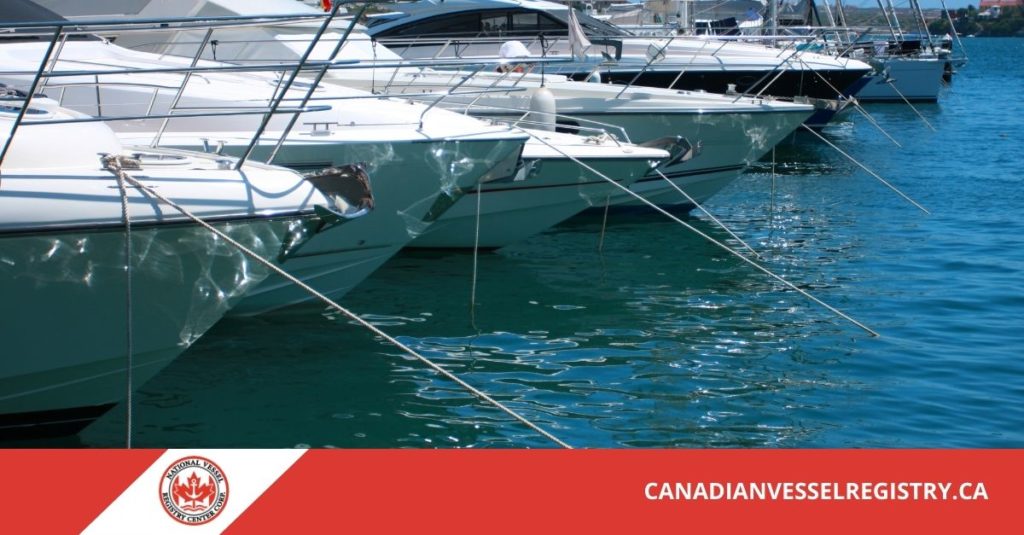One of the primary objectives of bareboat charters in Canada is to maximize the vessel’s earning potential so that both the owner and the charterer can profit. A bareboat charter occurs when the owner rents his or her vessel to the charterer for a predetermined period of time. When the charterer assumes command, he or she assumes sole responsibility for the vessel. This means that the charterer is responsible for the crew, fuel, insurance, and any required maintenance and repairs. In exchange for the use of the vessel, the owner will receive a daily, weekly, or monthly fee (also known as “charter hire”).
Documentation and Regulation
Third-party hull and liability insurance are required minimums. Depending on the arrangement, a bareboat charter party is required. Crew requirements vary by country; most charters require crew members to speak English or French. Registration under the flag of your nation is also required. If you are leasing your Canadian vessel for work outside of Canada, you must suspend its registry in the Canadian Register of Vessels. Lastly, if you charter a foreign vessel to work in Canada, you must register it in the Canadian Register of Vessels and verify that its registry in its home country has been suspended.
What Makes Bareboat Charters Unique?
Bareboat charters differ significantly from other kinds of charters in a number of important ways. The division of duties between the charterer and the owner is a crucial factor. In a bareboat charter, the charterer is in charge of providing the crew, supplies, and maintenance. This means that they are in charge of hiring a qualified crew, making sure the ship is adequately stocked, and keeping it in good working order throughout the charter.
On the other hand, the owner is responsible for providing a well-equipped vessel that satisfies the charter’s requirements. This entails making sure the boat has all the necessary tools, safety supplies, and enough space for the crew. The vessel must be delivered in good condition and must be seaworthy, according to the owner.
In order to take part in a bareboat charter in Canada, the charterer must fulfill a number of requirements. It is crucial that the charterer be knowledgeable about maritime law and boating. This guarantees that they are prepared to manage the duties associated with operating the vessel. Additionally, in order to legally operate the vessel in Canadian waters, charterers must abide by the rules established by Transport Canada.
In Canada, a charterer can be either a corporation or a shared partnership, but they must have knowledge of both maritime law and boating. The purchaser of a bareboat package must also comply with Transport Canada regulations in order to operate the vessel legally on Canadian waters (see below).
What Is The Difference Between Regulations And Time Or Voyage Charters?
A bareboat charter is the rental of a specific vessel for a specified time period. A time charter is a specific vessel for a specific period, but the charterer has no control over how the vessel is operated (i.e., it remains under the owner’s command). A voyage charter is also a specific vessel, but the charterer is granted complete operational control via an operating agreement.
Can Anyone Charter a Bareboat?
While bareboat chartering your Canadian vessel can be a lucrative way to supplement your income, there are a few precautions to take prior to handing it over to a qualified captain and crew. Transport Canada requires that you submit a form known as an Application for Bareboat Charter Registry. Along with a Statement of Qualification, this form will request information about your vessel, including (but not limited to): name, port of registry, measurements and dimensions, details of the underlying registration, and the details of each owner of the vessel (if there are multiple). There are some additional regulations to consider, including:
- Your vessel can be chartered “bareboat” if it is registered in your name.
- A vessel that is not registered in your name may be chartered bareboat, but it must be for private pleasure use.
What Are The Latest Regulations And Documentation Tips For A Bareboat Charter?
The vessel must be properly registered in the country of the charterer. The charterer must be a citizen of that country. The charterer must be a resident of the country. The charterer must be at least 18 years old and have no felony convictions.
If you want to make your vessel available for charter but are worried about the paperwork, we can help. The National Vessel Registry Center provides an easy-to-use web portal for bareboat charter registry applications. Our knowledgeable team will also review your documentation to ensure its accuracy and completeness, decreasing the likelihood that your application will be denied. We also offer a variety of additional vessel registration services, so regardless of your Canadian vessel’s requirements, we can likely help.
Easily Get All The Information You Need
Before the National Vessel Registry Center was here, collecting all required documents used to be time-consuming and challenging at times. Relax and call the National Vessel Registry Center today to avoid making any sort of error. You can also view the templates for each file and obtain documentation for your vessel online.
The Registry of Vessels website of Transport Canada provides additional information on Canadian maritime law pertaining to bareboat charters in Canada. The Registry of Shipping is a database that contains information on Canadian-registered vessels. This resource can be used to confirm a vessel’s registration status and documented history with Transport Canada.


